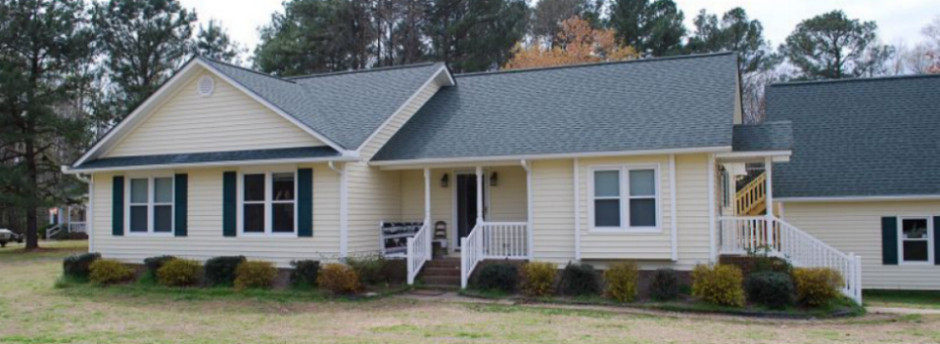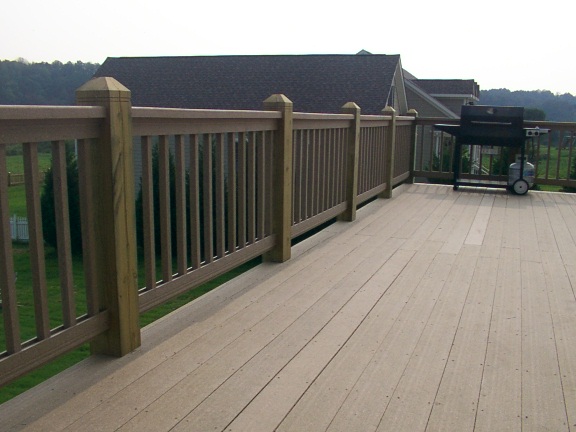Questions and Answers
Julie D. asked
on Laminate flooring :
Why is my laminate flooring not laying flat?
We have a new garage and 2nd floor above the garage. There is a laminate floor that looks like wood floors. Near the door, there is an empty space under the flooring so that the flooring bounces. Before it was barely noticeable but now it bounces between 1/4 and 1/2″. What should be done? Add glue? Or wait until spring and hope that the weather warms up? The floor man said the flooring is floating and normal. When it was bouncing 1/8″, I agreed but now am not so sure. The area that bounces is not bigger but the depth of bounce is worse.
Hello Julie,
Laminate flooring is said to float because it is not fastened to the sub-floor. All the individual pieces interlock into one sheet that lays or “floats” on the sub-floor. When properly installed it should have a gap of approximately 1/4 inch from the walls of the room on all sides. The gap is not visible because it is covered or “trimmed out” with shoe molding. This allows the laminate floor to expand and contract with changes in temperature and humidity.
At doorways the door jamb and casing is undercut the thickness of the flooring to allow the flooring to project underneath so that the raw edge of the flooring is hidden. Additionally transition strips are used in doorways or anywhere else one type flooring meets another to hide the raw edge of the flooring.
Laminate flooring tends to buckle and rise up when the flooring is prevented from expanding because of any combination of the following:
- no perimeter gap
- shoe molding installed too tight
- shoe molding nails driven into laminate
- laminate flooring projecting too far under door jamb (leaving no gap)
- transition strips restraining laminate because it extends too far under strip (leaving no gap)
- transition strip is face nailed through laminate
- face nailing through laminate flooring
To determine if your floor is rising up, place a long straight edge, such as a level or straight yard stick across the floor. Any high spots should be immediately apparent.
If you have no high spots in your floor the problem is with the sub-floor or floor joists and will likely require the services of a professional carpenter to remedy. (please note; I doubt this is your problem. From your description it seems likely that your flooring is buckling up)
If you do find a high spot, alleviating one or more of the conditions described above should solve your problem.
Using glue or face nailing the laminate will likely void any warranty and is a poor solution at best often resulting in worse problems later on.
Good Luck
Tony
Wood’s Home Maintenance Service offers solutions for a wide range of building, maintenance and repair needs. Contact us today for a free estimate.







Aren’t older houses wonderful? They have so much character! We bought and live in a house that was built in 1817…we were lucky, the people we bought it from loved this house, and it shows. They were here 28 years before they sold it, and kept it really nice. We did a small remodel in the first floor (to get rid of a laundry closet and add a powder room instead so Little Princess and Nana and Papa didn’t have to navigate the stairs. We made sure we used 100 year old barn wood, and some awesome 100 year old timbers to keep the ‘look’ authentic. And I love the wood floors – I spent an entire day with a hammer and crow bar to hack up the linoleum (and 3/8-inch press board) that was in the kitchen to bring it back to the original floors…what a huge difference!
We have buckling problems with our laminate-like new flooring, which is cork. We have tested the extra flooring panels we have (right out of the box) and have found these to be buckled as well. We will be working with both the installer and the supplier on this. In the meantime, I am curiuous as to how the material would have become buckled from the start.
Stan,
please see my reply here:
http://woodshms.com/wp/buckling-flooring/